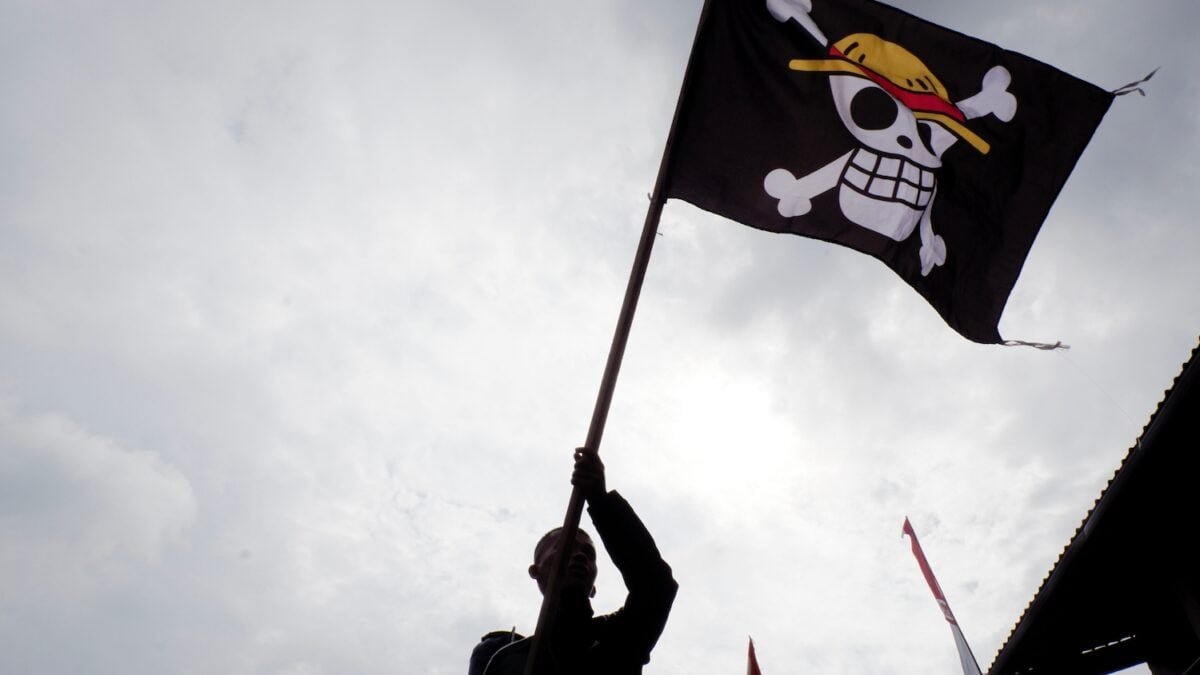
Why were Mexican “Generation Z” protesters flying a straw-hat skull-and-cross-bones anime flag on Saturday?
Protests broke out in several cities in Mexico this weekend. Reuters says that in Mexico City, hooded men apparently breached structures protecting the National Palace, where President Claudia Sheinbaum lives. On American right-wing cable news, Fox & Friends welcomed two suited Spanish-language podcasters who delivered to the American news consumer the claim that Mexico is experiencing a “national awakening” against its leftist president, fueled by rampant crime. He apparently cited the assassination of an anti-cartel mayor by cartel assassins as a reason, and said he would welcome a foreign military invasion. Meanwhile, according to the centrist magazine The Economist, murders have actually declined significantly under Sheinbaum.
So if you want an organized, united cause for these protests, I would wait until the dust settles if I were you. But if you want a unifying symbol, you could do worse than the straw-hatted Jolly Roger flag flown by the pirate heroes of the manga and anime super franchise One Piece. The flag was at the entire protest, and, due to its ubiquity in photographs of protesters, creates a feeling of separation from the movement.
What is the politics of One Piece?
One Piece has one of those huge textual universes that’s fascinating to content hyper-consumers, and intimidating to normal people, precisely because it’s so big. The heroes are a group of courageous pirate-adventurers, informally known as the Straw Hat Crew, and they often have tragic backstories. Their leader, Monkey D. Luffy, often seems to be guided by the principle of freedom, but he also wants to be the “Pirate King”, which makes him a fantastically defined form of freedom – basically the “freedom” to hang out with his good friends and go on fun adventures.
There are a lot of battles in One Piece, and they’re not all connected to the pursuit of freedom, or the related pursuit of triumph over injustice, but they often are. Specifically, the Straw Hats fight global overlords known as the World Nobles, who are one of those factions of palace-dwelling, decadent, cruel tyrants you see in fantasy worlds ranging from The Hunger Games to Zardoz, as well as, political cartoons about France in the 18th century.
Who are the protesters using the One Piece flag?
In Mexico right now, it’s a bit of a mess—especially if, like me, you’re trying to read about these events from afar while reading about them in the wrong language. The Associated Press wrote that one protest “was attended by people of a wide range of ages, including supporters of recently assassinated Michoacan Mayor Carlos Manzo, who attended the protest wearing straw hats, the symbol of his political movement.”
Manzo — who was a millennial, not a member of Gen-Z, if that matters — actually styled himself in a working-class straw cowboy-style hat. One was placed on his coffin during his funeral. Protesters in Guadalajara, for their part, waved a giant straw hat during a march, though in photos of that group, no one looks particularly “Gen-Z.” At the same time, even if you’re not a One Piece fan, if you came in contact with any trick-or-treaters last Halloween, you probably noticed that One Piece straw hats are trending among youngsters.
But last summer the One Piece flag and its straw-hat central symbol began appearing in protests around the world. According to the BBC, demonstrations in Indonesia in August were caused by “inflation problems and public frustration with the political elite”, initially “to condemn what many saw as excessive salaries and housing allowances for MPs.” Indonesian protesters used this symbol.
Kurniawan Arif Maspul, a researcher of Southeast Asian politics, tracked the One Piece flag phenomenon in late July, when it began being used as a general purpose protest flag in that country. He noticed the following in the local media:
A truck driver from East Java told a local outlet that he raised the flag because ‘life is getting harder’ and ‘Luffy fights injustice, that’s what we feel too.’ Others in university interviews called the flag ‘a symbol of honesty’ and ‘bravery against an oppressive system’, noting that the national flag felt more ceremonial than meaningful to them.
In September, the flag was used by protesters in the neighboring Philippines, according to the Guardian, which quoted a 23-year-old organizer named Ugero Vincent Liberato as saying, “We see the flag as a symbol of liberation against oppression… We must always fight for the future we deserve.”
So what does the One Piece flag mean as a protest symbol?
One flag-loving Redditor in the r/Vexiology subreddit called the flag “the de facto flag of Gen Z.” Given its use in protests around the world, it’s tempting to jump to this bold conclusion.
NPR correspondent Eyder Peralta says the protests were organized by “young people, Generation Z, who say they are speaking out against a narcissistic government.”
So the story on the face of it is that members of Gen-Z in Mexico have claimed a symbol created by Generation X manga artist Eiichiro Oda as their banner in protest of the assassination of a millennial mayor.
However, Mexican President Sheinbaum has claimed that the protests are funded and driven by members of the right-wing in Mexico, and instigated by online bots.
However, it is worth noting that pop culture icons rarely appear at the protests. The three-finger Hunger Games salute was used in Thailand in 2020 to protest against the royal family. Various Harry Potter-derived slogans and symbols were used during the 2018 pro-gun control march for our lives movement. And in 2008, the Guy Fawkes mask, lifted from the film adaptation of Alan Moore’s comic. vengeance, They were used in anti-Scientology protests, before being co-opted as protest symbols globally.
It can’t be more complicated than that.
